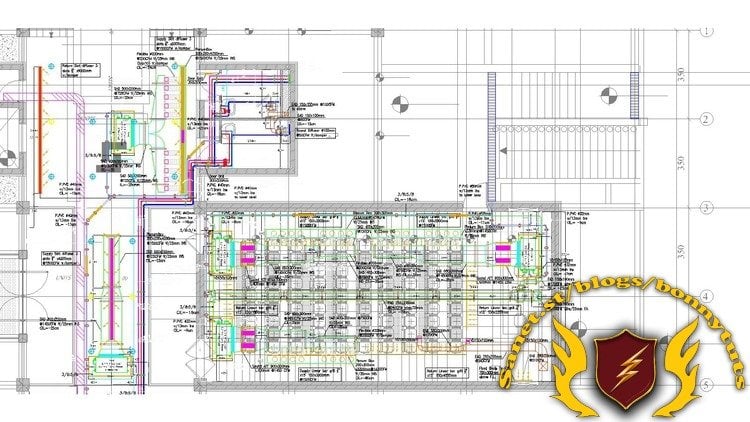
Published 9/2024
Created by Tarek MESTO
MP4 | Video: h264, 1280×720 | Audio: AAC, 44.1 KHz, 2 Ch
Genre: eLearning | Language: English | Duration: 22 Lectures ( 2h 51m ) | Size: 1.5 GB
HVAC engineering, HAP software
What you’ll learn:
HVAC system design
Learn and master HAP Carrier (Hourly Analysis program)
Cooling and Heating Load design
Equipment selection and sizing
Fresh air Unit for dehumidification
Requirements:
Mechanical Engineering
Basic of Thermodynamics
Description:
Welcome to “HVAC Design and HAP Software Mastery,” an in-depth course specifically designed for fresh graduate mechanical engineers aiming to excel in the field of Heating, Ventilation, and Air Conditioning (HVAC). This course not only covers the essential principles of HVAC design but also provides hands-on training with the HAP (Hourly Analysis Program) software, a critical tool used by professionals to simulate, analyse, and optimize HVAC systems.Throughout this course, you’ll start with the fundamentals of weather conditions and their impact on HVAC systems, moving on to the intricacies of architectural layouts, thermal loads, and ventilation. What sets this course apart is the practical focus on the HAP software, where you’ll learn to input data, perform load calculations, and design efficient HVAC systems tailored to various building types.By the end of this course, you will have mastered both the theoretical concepts of HVAC and the practical application of these concepts using HAP, making you fully equipped to tackle real-world HVAC projects with confidence.Curriculum Overview: Chapter 1: Weather ConditionSection 1: Weather ParametersUnderstand how weather parameters affect HVAC design.Section 2: Psychometric ChartLearn to interpret psychometric charts for HVAC applications.Section 3: ASHRAE MeteoUtilize ASHRAE meteorological data for precise HVAC calculations.Chapter 2: Understanding Architectural LayoutAnalyze how architectural layouts influence HVAC system design.Chapter 3: Thermal LoadsSection 1: Thermal LoadGrasp the fundamentals of calculating thermal loads.Section 2: Walls and PartitionsStudy the impact of different wall and partition types on thermal load.Section 3: Exterior Wall and SkylightEvaluate the thermal effects of exterior walls and skylights.Chapter 4: VentilationLearn the importance of ventilation in maintaining indoor air quality and energy efficiency.Chapter 5: Thermal Load (Advanced)Section 1: Thermal Load (Advanced)Dive deeper into advanced methods for calculating thermal loads.Section 2: Walls and Partitions (Advanced)Explore complex scenarios involving walls and partitions.Section 3: Exterior Wall and Skylight (Advanced)Further study the effects of exterior elements on thermal loads.Chapter 6: HAP Input LibrarySection 1: Weather InputLearn to accurately input weather data into HAP for simulations.Section 2: SchedulesMaster creating and managing schedules in HAP to reflect building usage patterns.Section 3: Walls PropertiesInput and modify wall properties in HAP to reflect real-world scenarios.Section 4: Windows and SkylightAdd and customize windows and skylights in HAP for accurate load calculations.Section 5: ShadesModel shading devices in HAP to assess their impact on energy efficiency.Chapter 7: HAP Space InputDiscover how to define and configure spaces in HAP, crucial for accurate load calculations and system design.Chapter 8: HVAC SystemsSection 1: HVAC System InputGet started with inputting comprehensive HVAC system data in HAP.Section 2: HVAC DX SystemsExplore the design and simulation of DX (Direct Expansion) systems using HAP.Section 3: HVAC Zoning SystemLearn the principles of HVAC zoning and its simulation in HAP.Section 4: HVAC Equipment SelectionUnderstand how to select the right HVAC equipment based on HAP outputs.Section 5: HVAC Chiller SystemStudy the design and operation of chiller systems using HAP.Section 6: HVAC Fresh Air Unit SystemModel and simulate fresh air units in HAP to ensure optimal indoor air quality.Chapter 9: Extra ChapterSection 1: Air TerminalsLearn about air terminals, their types, and how to incorporate them into your HVAC design using HAP.Who Should Enroll:Fresh graduate mechanical engineers eager to build a solid foundation in HVAC design and learn the HAP software.Professionals seeking to enhance their HVAC design skills with hands-on HAP software training.This course is designed to provide you with both the theoretical knowledge and practical skills needed to excel in HVAC design, with a strong emphasis on mastering the HAP software. By the end, you’ll be ready to take on HVAC projects with the confidence and expertise demanded by the industry.
Password/解压密码www.tbtos.com
转载请注明:0daytown » HVAC Design and HAP Software Mastery: A Comprehensive Guide